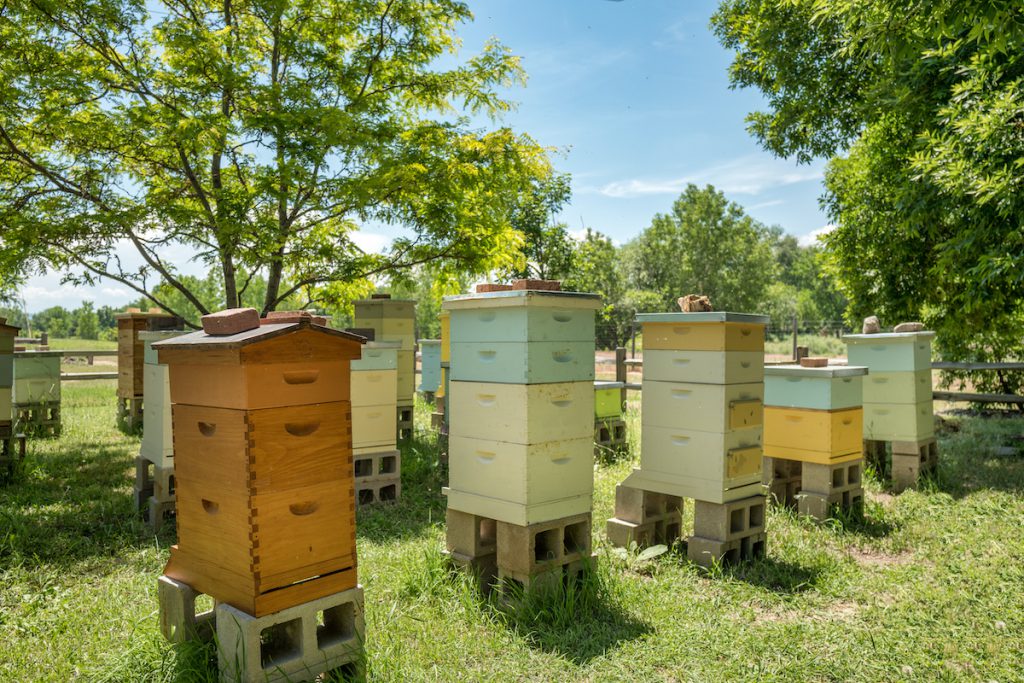
Honey bees are the most important pollinators in the entire world. About one-third of all the food we eat is grown thanks to pollination from honey bees.
What happens when the bees begin to die? We could lose these crops and much more forever.
Colony collapse disorder, or CCD, is the first sign that the bees have started to change and it’s harder for them to survive. Here we tell you all about CCD and how to prevent it.
Abandonment of the Queen
Colony collapse disorder is the phenomenon when all the worker bees abandon the queen and the babies to fend for themselves. The worker bees load the hive up with food and leave a few nurse bees around to help care for the new bees and then they disappear.
Once the food has been used up, all the bees remaining in the hive will die because they aren’t receiving any nourishment. It’s almost like the worker bees leave because there is no other way to solve their problem.
Without the worker bees, the hive is not able to survive long term. Every member of the hive works together to support the queen and keep the hive thriving. Losing workers is a devastating loss to a beehive.
Why is CCD Happening?
The root cause behind colony collapse disorder is unclear. But, there are a number of different guesses as to why the worker bees are taking off, never to return.
It may be due to new or emerging diseases such as Israeli Acute Paralysis virus and the gut parasite Nosema. The workers might have been poisoned by pesticides and they are leaving the nest to protect those left behind from getting poisoned as well.
Drastic changes in habitat are also thought to be a cause. But, the main cause may be inadequate foraging space leading to poor levels of nutrition.
If the worker bees can’t collect enough nutrient-rich food for the hive than there is no chance for survival. So, they may get all they can and head much farther than they’re used to trying to find adequate nutrition.
What is Being Done to Stop It?
Back in 2007, the U.S. Department of Agriculture, or USDA, began leading the national response to the CCD outbreak. The Environmental Protection Agency, or EPA, is also a valued ally in the fight for the bees.
These two groups formed a special committee to work on the problem. The CCD Steering Committee has since developed the Colony Collapse Disorder Action Plan.
The four primary components of the plan are:
- Determine the extent of the CCD crises through survey and data collection about honey bee colony production and health from beekeepers.
- Analysis of bee samples to see what kind of pests and pathogens the bees are being exposed to. These studies also determine how well the bee’s immune system is functioning, how stressed they are, and what types of pesticides they’ve been exposed to.
- Scientific, hypothesis-driven research and experimentation based on four candidate factors:
- Pesticides
- Bee Pests
- Environmental and Nutritional Stresses
- New and Re-emerging Pathogens
- Preventative measures to improve the quality and length of the honey bees lives and habitat to counteract the mortality increase due to CCD.

How Can You Help?
Never, ever, kill a honey bee. Make sure you call a professional and have the hive moved to a safe location away from your home.
Avoid using pesticides in your garden and around your house whenever possible. Consider planting some bee-friendly flowers in your garden during the next season.
Do You Have Bees In Your Yard?
Whenever there are pests around your property it’s troublesome. We don’t like critters and insects to get into our homes.
However, the honey bee is a particularly important part of our ecosystem. If you see a beehive don’t disturb it. Don’t spray it with bug spray, this could contaminate the entire population in your area.
Give us a call here at Proactive Pest and let us remove the bees for you. Our professional team will handle all the dirty work on your property. We will leave your yard safe for kids and pets and keep the bees safe in the process.
You can contact us here and we will be happy to come to visit your property and give you an estimate for removal.